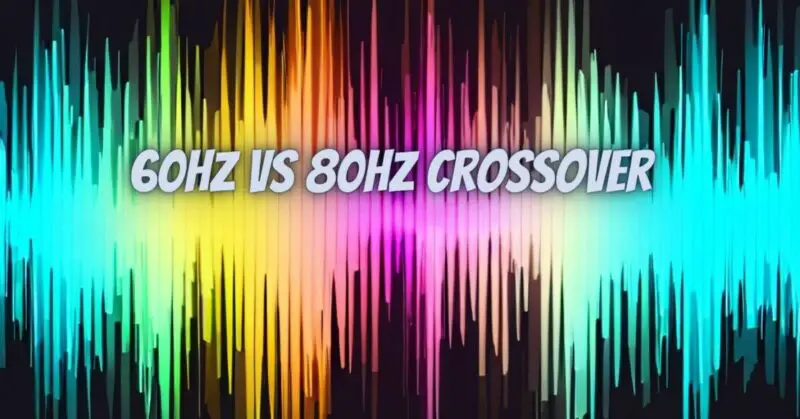The crossover frequency is a critical setting on any subwoofer system. It determines the point at which the subwoofer takes over from the main speakers in reproducing the lower frequencies. The two most common crossover frequencies are 60Hz and 80Hz.
60Hz Crossover
Setting the crossover frequency to 60Hz means that the subwoofer will handle all frequencies below 60Hz, while the main speakers will handle all frequencies above 60Hz. This setting is often recommended for smaller speakers, as it allows them to focus on reproducing the midrange and treble frequencies more effectively. It can also be a good choice for rooms with poor acoustics, as it can help to reduce the amount of bass that is reflected off the walls and ceiling.
However, there are also some potential downsides to using a 60Hz crossover. First, it can make the bass sound less impactful, as the subwoofer is not reproducing as much of the lower frequencies. Second, it can make it more difficult to localize the sound of the bass, as it is coming from a different location than the midrange and treble frequencies.
80Hz Crossover
Setting the crossover frequency to 80Hz means that the subwoofer will handle all frequencies below 80Hz, while the main speakers will handle all frequencies above 80Hz. This setting is often recommended for larger speakers, as it allows them to reproduce a wider range of frequencies without distortion. It can also be a good choice for rooms with good acoustics, as it allows the subwoofer to produce a more even and balanced bass response.
However, there are also some potential downsides to using an 80Hz crossover. First, it can make the bass sound too boomy or muddy, especially in smaller rooms. Second, it can make it easier to localize the sound of the bass, which can detract from the overall immersion of the listening experience.
Which Crossover Frequency Should You Use?
The best crossover frequency for your system will depend on a number of factors, including the size and type of your speakers, the size and acoustics of your room, and your personal preferences.
If you have small speakers, you may want to start with a 60Hz crossover. If you have larger speakers, you may want to start with an 80Hz crossover. You can then experiment with different crossover frequencies to find the setting that sounds best to you.
Here are some additional tips for choosing the right crossover frequency:
- If you are using a subwoofer with a built-in crossover, consult the manufacturer’s instructions for recommendations.
- If you are using a receiver or preamplifier with a crossover control, you can use the auto EQ feature to set the crossover frequency automatically.
- If you are unsure of the best crossover frequency for your system, you can ask a professional audio installer for help.
There is no right or wrong answer to the question of whether to use a 60Hz or 80Hz crossover frequency. The best setting will depend on your individual system and preferences. However, by understanding the pros and cons of each setting, you can make a more informed decision about which crossover frequency to use.

